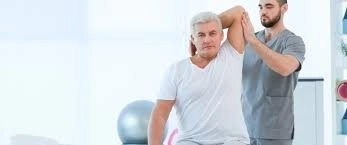
Physiotherapy for Hemiplegia with Prof. Dr. Ahmed Mohamed Sabeq
Published on: 2025-06-18 | Written by: I Move Clinic Dr. Ahmed Mohamed Sabiq for Physical Therapy
Hemiplegia is one of the most life-altering conditions a patient can experience. However, it’s not the end of the road. Thanks to advancements in physiotherapy, many patients today can regain a significant portion of their mobility and independence. In this article, Prof. Dr. Ahmed Mohamed Sabeq, a professor of physiotherapy, explains how proper rehabilitation can make a real difference in the life of a hemiplegic patient.
What is Hemiplegia?
Hemiplegia is the loss of movement on one side of the body due to damage to the brain or spinal cord. It typically affects the arm and leg on the same side. Common causes include strokes, head injuries, or brain tumors.
The Role of Physiotherapy in Recovery
Prof. Dr. Ahmed Mohamed Sabeq emphasizes that physiotherapy isn’t just about movement — it helps with:
-
Improving balance and body control
-
Strengthening weak muscles
-
Stimulating nerves to restore function
-
Enhancing blood circulation and reducing muscle spasms
-
Regaining self-confidence and independence
Physiotherapy Plan for Hemiplegic Patients
| Objective | Techniques Used |
|---|---|
| Improve limb mobility | Active & passive exercises, muscle stimulation |
| Reduce muscle spasticity | Stretching, electrotherapy, massage |
| Enhance balance | Balance training, gait therapy |
| Strengthen muscles | Resistance training, functional exercises |
| Daily functional recovery | Mobility training, everyday activity practice |
When Will Results Appear?
According to Prof. Dr. Ahmed Mohamed Sabeq, progress varies from one patient to another depending on age, severity, and commitment to therapy. Some see improvements within weeks, while others require long-term plans — but it’s always worth the effort.
Can Movement Be Fully Restored?
Prof. Dr. Ahmed Mohamed Sabeq explains that recovery depends on the type of injury, but physiotherapy can help patients:
-
Regain partial or full mobility
-
Reduce dependence on others
-
Significantly improve quality of life
When to See a Physiotherapist?
You should visit a specialist like Prof. Dr. Ahmed Mohamed Sabeq if you experience:
-
Sudden weakness or paralysis on one side
-
Loss of balance
-
Muscle stiffness or spasms
-
Difficulty walking or moving

